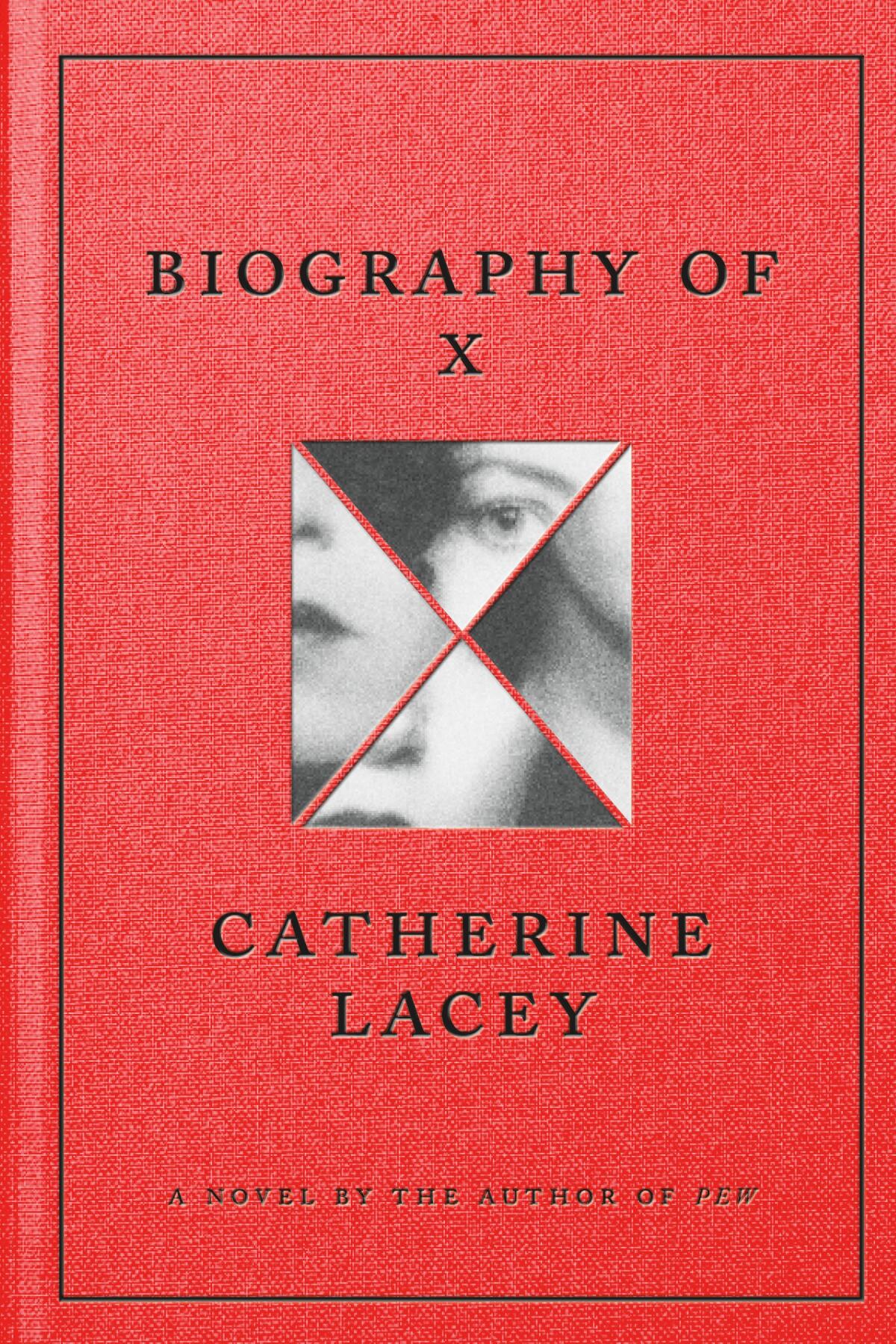Step aside, Lydia Tár: Novelist Catherine Lacey presents the ultimate art monster

On the Shelf
Biography of X
By Catherine Lacey
FSG: 416 pages, $28
If you buy books linked on our site, The Times may earn a commission from Bookshop.org, whose fees support independent bookstores.
At the beginning of the film “Tár,” the titular character, a famous female conductor played by Cate Blanchett, tells the New Yorker’s Adam Gopnik (playing himself) that sexism has never been a problem for her. “I really have nothing to complain about,” she says, seeing herself as above mundane things like misogyny and cancel culture. Not so fast, Lydia Tár.
“Tár” reminds us that we have labored through #MeToo and #cancelculture and now we find ourselves on the other side. What if our world were slightly different? What if the fulcrum were lifted and set back down just a few degrees to the left? Catherine Lacey’s new novel, “Biography of X,” gives us an idea what this brave new world might look like.
Angered by an unauthorized biography of her late wife, X, journalist C.M. Lucca decides to write her own biography. The result is the book we hold in our hands, with an authentic-seeming title page, copyright page and notes. X is pure fiction — imagine Marina Abramovic crossed with Elena Ferrante. But real writers, including Merve Emre, Renata Adler and Durga Chew-Bose, appear in its pages. Poet Frank O’Hara survives being run over by a Jeep on a beach in 1966. Brian Eno is “Brianna” and Rachel Cusk turns into “Richard Cusk.” X has a lengthy love affair with Connie Converse, a real singer-songwriter who vanished in 1974, and Carla Lonzi, a real Italian feminist art critic who died in 1982.
How Todd Field spent hours and hours studying classical music and orchestras before writing his Oscar-nominated screenplay.
“Biography of X” takes place in a recently reunified United States. X was born in the ST, or Southern Territory, an ultra-conservative Christo-fascist regime. Married and a young mother, X escapes to the free North through a series of cons and disguises, bringing a whole new meaning to Joan Didion’s assertion that we “tell ourselves stories in order to live.” Those stories, and those people, become X and her art. In her biography, Lucca wonders: Who is the real X? Does she exist?

The problem with writing X is that all the discoveries Lucca makes bring her no closer to her art monster wife. (In her 2014 novel, “Dept. of Speculation,” Jenny Offill writes of her intention to become an “art monster.” “Women almost never become art monsters because art monsters only concern themselves with art, never mundane things.”)
In X’s world, sexism has been all but eradicated thanks to the “Painters Massacre of 1943,” in which 14 male artists, including “Marcel Duchamp, Alexander Calder, Wassily Kandinsky, and Jackson Pollock,” were murdered. The idea that a white, cis-gendered man might have something to say, or to express it artistically, is laughable. “Male artists pursued careers with the burden of explaining or accounting for the global history of male violence and destruction; that is — men could only make work about being men,” Lucca tells us. “Few took on the task, and those who did were often ridiculed.”
This is Lacey’s fourth novel. Her first, “Nobody Is Ever Missing,” tells of a woman’s journey to escape the memory of her dead sister. “The Answers” is a tale about precarity and technology. In her last novel, “Pew,” a genderless alien shows up in a small religious town. But in its boldness of premise and execution, “Biography of X” goes above and beyond, under the river and through the woods. It flaunts world-building skills that the writers of HBO’s “Game of Thrones” wish they’d had.
Lacey sets the clock for a suspenseful homage to “Stranger Things” and “The Lottery,” with eerie narrations on gender and religion but not much payoff.
At first read, Lacey’s dedication to the bizarro-world reality of this novel was irksome. I was more interested in her sentences: “Her adoration had a way of leading my blood around in my body like an obedient dog”; “Beware of anything that you hear yourself saying too often”; “The price of having an identity is the inability to transform it”; “New lovers are always digging their graves and lying down, smiling, scooping the dirt in with their clean hands.” I found myself yearning for more of X and Lucca. I didn’t care about the fact that X may have been a spy for the Northern Territory or that she had collaborated with David Bowie.
What possessed Lacey to invent all this detail? It’s like Margaret Mitchell in “Gone With the Wind” spending a hundred pages on Confederate troop movements when the reader wishes she’d just get back to Scarlett and Melanie. A short novella on Lucca’s grief and her struggle to understand X would have been just as transfixing — even if, at the end of the book, she had discovered nothing about her. A novella about grief, about love.
But the ending of this novel changed my thinking and confirmed that Lacey is one of the most fearless novelists writing today. X is clear about one thing: “I want something palpable and beautiful . . . But nothing a human can do is palpable. The history of art is women consoling each other in the face of this fact . . . The idea of getting somewhere with love is even more frustrating and futile than the idea of getting somewhere with art.”
Chelsea Martin’s first novel, “Tell Me I’m an Artist,” is a rebuttal to Sally Rooney’s surface Marxism. It’s also as messy and frenetic as TikTok.
Critics of “Tár” have said Blanchett should be ashamed of herself for playing a monstrous woman, someone who gives a bad name to U-Haul lesbians and female conductors everywhere. Blanchett responded: “It’s a meditation on power. And power is genderless.”
“Biography of X” is also about power. The climax of the book, what Lucca discovers, is not to be shared in this review. But it is the recognizable nightmare of anyone who has loved an art monster. More terrifying and tantalizing is the message such parallel worlds send to art monsters themselves. Lacey asks, what happens when we don’t choose love?
Tár tells Gopnik that her choice of Mahler’s Fifth is a choice for “love.” Anyone who watches this film knows that couldn’t be further from the truth. Much to Lucca’s dismay, it is X’s choice too. The choice is art. And that choice is about power.
Ferri is the owner of Womb House Books and the author, most recently, of “Silent Cities San Francisco.”
More to Read
Sign up for our Book Club newsletter
Get the latest news, events and more from the Los Angeles Times Book Club, and help us get L.A. reading and talking.
You may occasionally receive promotional content from the Los Angeles Times.








